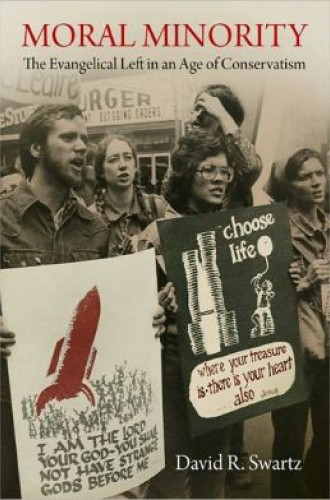Moral Minority, by David R. Swartz
America had lost its way. So believed 50 evangelical Christians who convened in downtown Chicago in late November 1973. They arrived weighted down by the gravity of the nation’s moral failings and yet buoyed by a palpable sense of opportunity: a social and political awakening was afoot in the churches, and if properly channeled, it could right the country’s course.
No, this was not an early gathering of the Christian right. The major issues on the agenda did not include abortion or school prayer. Instead, the believers who crowded into the dingy Wabash Avenue YMCA spent Thanksgiving weekend hammering out the Chicago Declaration of Evangelical Social Concern. They stated—among other things—that “we deplore the historic involvement of the church in America with racism,” “we must challenge the misplaced trust of the nation in economic and military might,” and “we must attack the materialism of our culture and the maldistribution of the nation’s wealth.” The document immediately became a touchstone of the evangelical left.
In Moral Minority, David Swartz recovers the story of the unlikely coalition these progressive evangelicals forged in the 1960s and 1970s. The book unfolds as a series of engaging biographical sketches that offer a window into the diverse experiences and concerns animating the movement.





